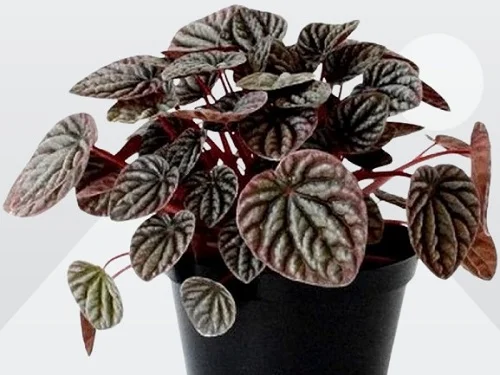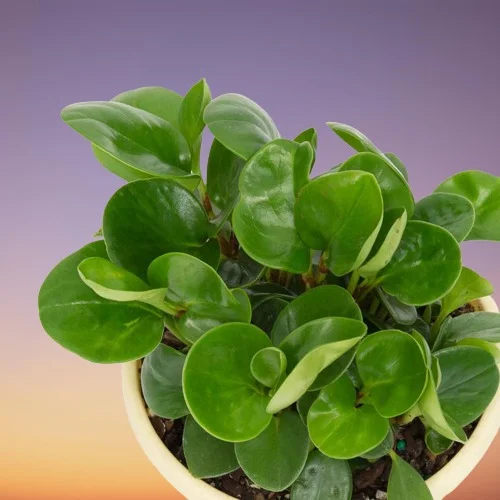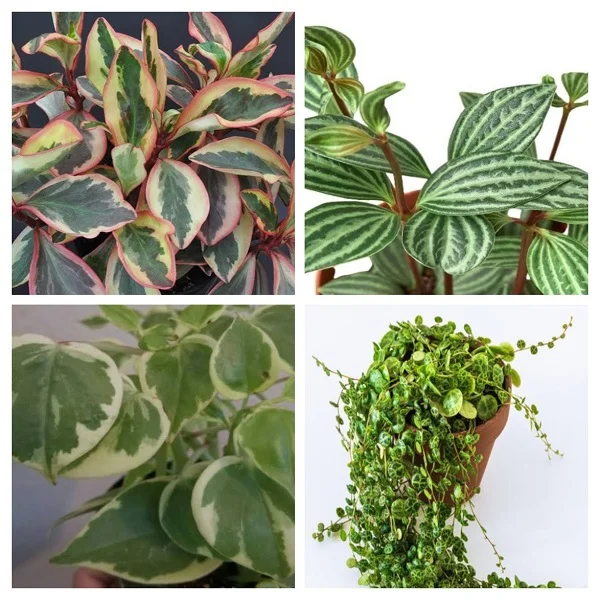12 Reasons Why Peperomia Leaves are Falling Off and their Remedies
Some links in this post may be affiliate links
Peperomia is dropping leaves due to improper watering, inadequate light, low humidity, extreme temperatures, poor feeding, aging, pests, diseases among others.
The Peperomia varieties are popular plants on account of their variety, ease of care and ability to adapt to a wide range of growing conditions.
Generally, Peperomia thrive in medium to bright indirect light, warm and humid conditions, and moderately moist, fertile, well-drained soil coupled with regular feeding in spring and summer. Learn how to grow and care for Peperomia (Radiator Plants).
If the growing conditions are not met, Peperomia can develop some problems. One of the common problem is leaf drop. There are many and varied reasons why the leaves may fall off.
We have discussed herebelow 12 reasons why Peperomia is dropping leaves and their solutions. Keep reading for a detailed account on these causes and how to resolve them.

12 Reasons for Peperomia dropping leaves and fixes
1. Pest Infestations
Peperomia are prone to spider mites, whiteflies, scale insects and mealybugs. These pests attack the new growth from where the suck the plant sap causing the plant to become dehydrated which results in wilting and dropping leaves.
Solutions
Regularly inspect your Peperomia for these pests and take timely control measures. Treat the plant for the pests with neem oil or insecticidal soap. Ensure to follow the instructions on the label.
Regularly clean the leaves by damp wiping with a soft cloth to discourage pest infestations.
Raise the humidity to reduce pest infestations by setting the pot on a wet pebble tray or by use of a cool mist humidifier.
Maintain the plant well-pruned and improve air flow to minimize infestations.
2. Low Humidity
Peperomia will grow in moderate room humidity but too low humidity will affect photosynthesis meaning the plant cannot make enough food for growth and energy. To save on energy, it begins to drop the leaves.
Solutions
Peperomia flourish in a humidity of 50& and 80%. Use a hygrometer to monitor the humidity for the optimum growth of your plant.
To elevate humidity, set the pot on a wet pebble tray, use a humidifier or group the plants together.
You may also grow the plant in a well-lit bathroom, kitchen, laundry area and other moist areas in the home. The compact varieties are perfect for a closed terrarium where a high humidity can be maintained.
3. Too Little Light
Sufficient light is needed for making food that is required for energy and growth. Low light implies that the plant cannot make enough food for energy and growth.
Therefore, in an attempt to save energy, the plant begins to drop leaves. This way, it saves the available energy for the vital functions to keep alive.
Solutions
Cutback the leggy, bare stems to encourage new, fresh growth.
Position your Peperomia in a brighter spot where it will receive medium to bright indirect light. You may also use a full spectrum grow light if you do not have adequate lighting in your home.
Regularly clean the leaves by damp wiping with a soft cloth to increase surface area for absorption of enough light for photosynthesis.

4. Overwatering
Overwatering results in soggy soil (excess water in the soil). Too much water in the soil reduces the oxygen concentration in rootzone and this causes the roots to die.
As such, the roots cannot take up water and nutrients needed for the food making process. This means the plant does not make enough food for growth and energy. In a bid to save energy, the plant begins to drop its leaves.
Solutions
Pot your Peperomia in a pot with a drainage hole and well-draining soil to prevent waterlogging.
Do not water on a schedule; water only when the top few inches of the soil feel dry to the touch.
5. Underwatering
When Peperomia is underwatered, there is little moisture in the soil. Thus, the plant cannot take up nutrients and water needed for food making causing it to drop leaves to save energy.
Solutions
Water your Peperomia immediately and it should recover.
Thereafter, water the plant when the top few inches of soil dry out but do not allow the soil to dry out completely.
6. Extreme Temperatures
Extreme temperatures; either too high or too low will affect the normal functioning of the plant systems. Too high temperatures will cause dehydration leading to wilting and leaf drop. Too low temperatures cause the plant to stop growing resulting in falling leaves.
Solutions
Keep your Peperomia away from drafts emanating from drafty windows, air conditioning, open doors, hot surfaces, hot vents and others to maintain an average warmth of 15-260C. A room temperature that is comfortable for you is ideal for the plant.
7. Overfeeding
Overfeeding your Peperomia will cause the roots to die due to fertilizer burn meaning they cannot take up nutrients and water required for photosynthesis. Without, adequate food for growth and energy, the plant begins to drop leaves to save energy.
Solutions
Take care not to overfeed your Peperomia. Follow the instructions on the label of the plant food to avoid overfeeding.
Regularly flush out accumulated salts from the soil by running a stream of water through the soil until it comes out through the drainage holes.

8. Salts Buildup
Excess soluble salts in the soil from the water or excess feeding will cause the Peperomia leaves to dry, shrivel and drop.
Solutions
Occasionally, leach out the salts from the soil by running a stream of water through the soil until it comes out through the drainage holes. Repeat the process several times.
9. Root-rot Disease
Peperomia are prone to root-rot disease which is enhanced by soggy soil. The disease is characterized by wilted, yellowing leaves, corky swellings under the leaves and dropping leaves.
Soggy soil reduces oxygen concentration in the soil which causes the roots to die which implies they cannot take up water and nutrients to the leaves. This causes the leaves begin to wilt and eventually fall off.
Solutions
Slip the Peperomia out of its pot and inspect the roots. Brown-black mushy roots indicate root-rot, trim them off.
Treat the healthy roots with a fungicidal solution as instructed by the manufacturer.
Disinfect the pot with the fungicidal solution or use a fresh pot to repot the plant in fresh free-draining soil.
Withhold watering the plant and keep it dry for some time before resuming watering.
10. Being Pot-bound
A pot-bound plant is one whose roots have filled the pot and there is very little soil to hold water when you water your Peperomia. Therefore, there is no water for the plant to take up to the leaves. The leaves loss their turgidity and they wilt and begin to drop.
Solutions
Check the bottom of the pot, if you spot roots growing through the drainage hole it is time to repot.
Repot your Peperomia into a pot one size larger, with a drainage hole and free-draining soil.
You may divide the large plant into several sections and pot the sections in individual pots to propagate new plants.
11. Repotting Shock
Repotting your Peperomia will cause it some shock which may lead to some leaves wilting and dropping before it can adjust to the new growing conditions.
Solutions
To minimize repotting shock, water the Peperomia thoroughly one day before repotting. A well hydrated plant experiences less shock and is easier to divide.
Do not make too many changes at once. For instance, after repotting, maintain the plant in the same location until it is well established before moving it to a new location.
12. Aging
As the Peperomia ages, it naturally drops the lower older leaves to spare energy for the growth of new leaves.
You liked it? Share on social media.
Related Content
Amazon Associates Disclosure
Homeplantsguide.com is a participant in the Amazon Services LLC Associates Program, an affiliate advertising program designed to provide a means for sites to earn advertising fees by advertising and linking to amazon.com.

